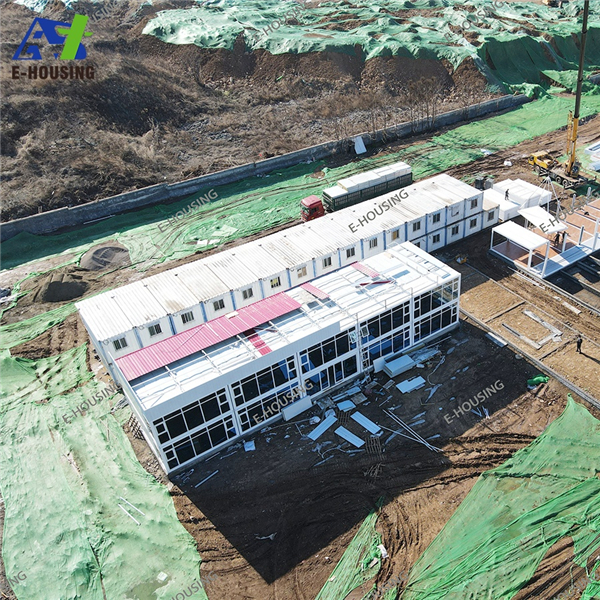Over the years, we've debated whether building houses out of shipping containers made sense. After all, shipping containers are stackable, durable, abundant, cheap, and designed to move to almost anywhere in the world. On the other hand, used shipping containers need a lot of refurbishment to make them habitable in the first place, which in itself can be a laborious process. Of course, such obstacles haven't stopped people and companies from transforming these metal boxes into impressive units that feel every bit like any regular home.
The Plunk Pod is one great example of how shipping container housing can be done. Created by Ontario, Canada-based company Northern Shield, the unit features a clever layout that gets around some of the issues that come with the long, narrow space inside a shipping container. We get a closer look at one finished version of the unit via Exploring Alternatives: Building Steel Frame Structure

The 8.5-foot-wide, 53-foot-long pod measures 450 square feet (42 square meters) and has been completely redone inside and out, insulated, and its exterior is clad with a durable Hardie paneling system. The unit is designed to be either installed temporarily or permanently and can even be put on wheels if needed.
The interior of this one-bedroom pod feels very much like any conventional home with all the usual amenities that one might expect. Here we see the open plan kitchen and living room beside each other. In the living room, there is enough space for seating, a wall-mounted television, a coffee table, and an electric fireplace. The counter here is an extension of the kitchen area, and with the addition of stools, can also be used as an area for dining or working.
The home is mostly heated and cooled with a ductless mini-split system, but also has supplementary heating provided with baseboard heaters in closed rooms, like the bathroom and bedroom.
The kitchen offers a relatively more optimal configuration compared to other shipping container houses that we've seen, thanks to a "mini-L" shaped layout, complete with a waterfall-style countertop. This provides a bit more cabinet and counter space for storing and preparing food, as well as subtly distinguishing the kitchen from the living room.
There is a corrugated steel accent wall here, outfitted with open shelving, rather than bulky overhead cabinets. There is also a stove, oven, and refrigerator, as well as space for a microwave if desired.
The kitchen is strategically placed to have maximum sunlight and air, thanks to a set of sliding patio doors. This means that they can open up—perhaps out onto a deck—so the inside space extends out, giving the sense that the home is larger than its actual footprint. Additionally, these openings can be converted to connect to other add-on pods so the home can be expanded as needed.
Besides the kitchen, there is yet another door, which can function as the front entry door, or as an extra door that can open up to increase cross-ventilation.
The bathroom is designed in an interesting way: Instead of having one bathroom and having to fight over who takes a shower and when, the bathroom has been split into two smaller rooms.
One room has the toilet and a small vanity sink, while the adjacent "shower room" has just that, plus another vanity and sink. One might wonder if it might have been better done with a sliding door of some sort between the two rooms, but the general idea here makes sense. To save space, both rooms have sliding pocket doors that take up less space than the typical swing door.
The corridor here has storage built in above the toilet and shower rooms, plus some storage options that are mounted to the wall.
At the end of the shipping container home is the bedroom, which is large enough to fit a queen bed, and still has some space left over to put a wardrobe unit in. The room feels quite airy and light overall, thanks to the two windows here, which can open up to get some natural ventilation in.
The Plunk Pod is one of the more livable shipping container houses we've seen yet, and the company also says that it can offer other customized turnkey solutions, like installing a "solar trailer" to generate power or a water tank to store water for an off-grid installation.
For those who are interested, this particular Plunk Pod is currently for sale for $123,500. To see more, visit Northern Shield.

3 Rooms Prefab House Sign up for our newsletter